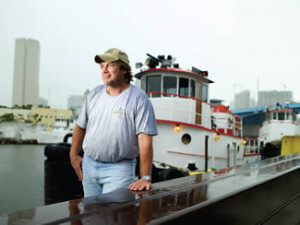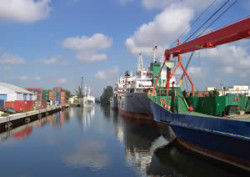SHARE:
Development
Cross Currents
A plan to revitalize the Miami River has put the marine industry on a collision course with developers.
|
That worries people like Capt. Beau Payne of P&L Towing, a tugboat operator and 27-year veteran of the river’s marine industry. “Things are changing fast. People are selling out, going out of business. What’s wrong with preserving land solely for marine interests?”
Payne and others recognize the challenge: A regionwide shortage of waterfront property coupled with an unapologetic mindset in City Hall to promote high-density residential development throughout the urban center. “The development interests are really pining after this land,” says Ernest Martin, a former executive director of the Miami-Dade County Department of Community and Economic Development who serves on the Miami River Commission. “People want to live by the water. Who can blame them?”
Adding urgency to the debate is the five-year, $86-million river-dredging project, due for completion as early mid-2008. Federal funds for the project are arriving piecemeal, in response to repeated assurances from local officials that a deeper, cleaner river will stimulate growth in the marine industry. That assurance is tempered by skyrocketing land values. For now, a highly touted $55-million expansion of Merrill Stevens Dry Dock’s midriver facility, which includes a proposed marine vocational school, remain in place — pending completion of the dredging. The expansion would pump $195 million annually into the economy while spawning nearby marine-related investment, predicts a River Commission study.
|
The dredging also will be a boon to cargo haulers and the private shipping terminals that serve them. Today the shallow riverbed — about 11 feet on average — restricts the size of ships that call; others must limit their loads to avoid grounding. And free trade agreements such as DR-CAFTA (Dominican Republic-Central America Free Trade Agreement) are expected to boost demand greatly for shallow-draft ports, including the Miami River’s, which accommodate the smaller vessels that supply the Caribbean basin.
For now, a sluggish housing market has calmed the waters, with fewer properties changing hands and building permit applications dropping, says real estate analyst Michael Y. Cannon. But the lull will not last, he predicts, with more residents fleeing the road-clogged suburbs. “Not all of these proposed (residential) projects on the river will be built. Some just don’t make sense.” he says. “But the pressure to develop there will remain.”

























